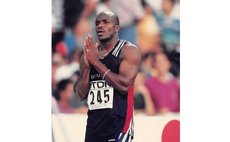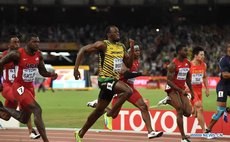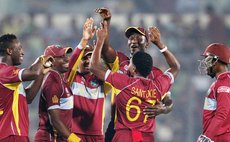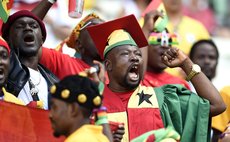Requiem for a cricketer
The first Border/Gavasker Test match at Adelaide will go down as memorable for a number of reasons, chief of which was its portrayal on the throes of Phil Hughes' tragic passing several days earlier, victim of an accidental death taking place through a Sheffield Shield match. Hughes was a close friend of most players on the Australian team and a very likeable character. It can be said the match was dedicated to him, and proved not to be void of exceptional performances. As it turned out, the prematch ceremony along with assembled cricket bats symbolically arrayed on the edge of the boundary, both teams wearing dark armbands, was a scene inevitably poignant to all concerned.
It is not immediately clear to me, but the tragedy may well be the first such occurrence in a first class match, cricket being largely considered the sport invested with the element of safety implicit in its non contact configuration. There was expected uncertainty that the match would have taken place so soon after the funeral. However, the preferred view of all, including Australian captain Michael Clarke, a bosom buddy of the deceased, prevailed towards making the occasion a marked tribute to the fallen comrade.
Despite it being a Tuesday, and a working day 25,619 spectators were on hand for the first ball, giving the match added impetus in context of both Australia and India having something to prove in search of elevating towards the topmost rating in international cricket.
One captain, Clarke was struggling with fitness, as would be expected for a victim of chronic lower back problems. His counterpart Virat Kholi had no such impediments but was faced with having everything to prove in his capacity of interim captain for India. It would give the Indians every pleasure to straddle the mountaintop of the international game in its longer format, but they have Australia and England standing in their way before they can supplant South Africa who are taking on West Indies this southern summer. The latter are not rated to cause serious surprise even though they can be capriciously unpredictable.
Australia won the toss to bat off in this Phil Hughes memorial. Every effort to put their best foot forward did not prevent early hiccups of Rogers and Watson maybe succumbing to the demanding poignancy of the occasion. However, the lunchtime score of 114 for two wickets provided the launching pad for David Warner to get eventually to his 10th Test century and a remarkable 5th in the calendar year.
The left-handed Warner plundered 145 in a style expressive of extreme reluctance to allow either pace or spin to hamper his fluid strokeplay. It was all now a matter of how much overload the Aussies could apply to crafting a truly wonderful total -- the score standing at one time on 302 for three. Yet, Clarke's back trouble saw him retire for a time with his score on 60, and it was up to Steve Smith, another Australian sweepingly buoyant in his present form to sustain a strong iron grip to post 352 for 6 at stumps on the first day.
Smith went on to an undefeated 152 and Clarke, resuming to reach 128, three centuries in Australia 517 for 7 declared at close of the second day. Australia, scoring quickly as usual, had taken 120 overs to compile their runs and it was left to be seen what kind of response Kholi and his men would offer.
If Warner's batsmanship was impudently effective, Virat Kholi was nothing short of sensational. He attacked the Australian bowling on both sides of the wicket and his dismissal at 367 for five induced much nervousness in the opposing camp. Kholi was out hooking for 115 even in face of a very clear bait offered to him. Rahane 62, Pujara 73 and Vijay 53 saw India to the respectable response of 444, only 73 runs behind after they had looked more competitive at 369 for five to close day three.
Many thought only a draw was likely at this stage except that Nathan Lyon's offspin had reaped five for 134 and the Adelaide surface had provided some evidence of increasing excitement towards the finale.
In their second knock Australia benefitted from a second lightning strike when Warner helped himself to another century – terminated by the odd occurrence of his attempting a reverse sweep which had the crowd of 27,639 wondering at the profligacy which on impulse could stray into the mind of an obvious genius. He was out for 102, the board reading 213 for four and the lead 286.
Australia's second declaration came at 290 for 5 (Smith 52 not out, Mitch Marsh 40 played in extremely cavalier fashion). India were offered 364 for victory and all on the final day and 98 overs in which to get it. At 237 for two and Kholi poised not out on his second century of the match, everything was dependant on how well the Indian temperament would hold. Soon enough Vijay fell LBW for 99 missing a rank long hop. Kholi self destructed sweeping to make it 304 for seven, and Nathan Lyon completed the obituary column for India all out for 314. He took 7 for 152 to claim Man of the Match accolade with 12 for 291, setting up the 4-match series as a likely thriller.
India succeeded in blunting the scorching pace of Michell Johnson but ironically failed to master the spin of Nathan Lyon – an inexplicable outcome considering they are among the best players of slow bowling.
Another instance of failure, perhaps brought foolishly upon themselves, is the continued insistence by India against the use of Decision Review System in their matches. Umpiring inconsistencies on a few occasions clearly went a begging against their best interests. They only have themselves to blame. All in all, though the match was a crowd pleaser and in itself a wonderful signpost to Test cricket – perhaps a fitting testament in memory of Phil Hughes.
To all my readers I wish the blessings of a Merry Christmas and a prosperous New Year.




